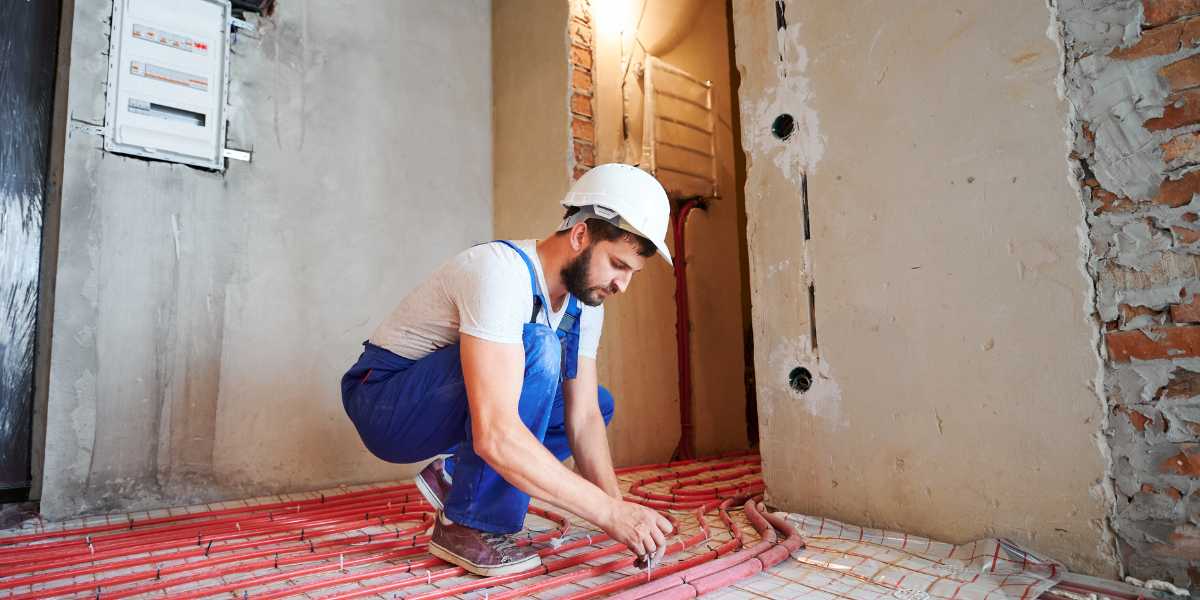Discover the best flooring options for radiant floor heating, including top materials for efficient heat conduction, comfort, and durability. Find out which flooring choices maximize energy savings and work seamlessly with underfloor heating systems.
What Are the Best Flooring Options for Radiant Floor Heating?
Radiant floor heating has become a popular and efficient method for warming spaces, as it provides even, consistent heat throughout a room. Unlike traditional heating systems that rely on air circulation, radiant floor heating warms the floor directly, offering an efficient and cozy experience.
When choosing flooring for a radiant heating system, it’s essential to pick materials that conduct and retain heat effectively. This guide outlines the best flooring options for radiant floor heating based on factors like heat conductivity, durability, and comfort.
1. Tile Flooring
Porcelain and Ceramic Tiles
Tile is often considered one of the best flooring options for radiant floor heating due to its excellent thermal conductivity. Porcelain and ceramic tiles absorb and retain heat well, allowing the warmth to spread evenly across the floor. Additionally, tile is highly durable, moisture-resistant, and easy to clean, making it ideal for bathrooms, kitchens, and basements.
- Pros: High heat conductivity, durable, moisture-resistant
- Cons: Can feel cool when the heating is off, hard surface underfoot
2. Stone Flooring
Marble, Granite, Slate, and Limestone
Natural stone is another top choice for radiant heating, as it conducts heat extremely well. Stone flooring provides a luxurious, high-end look, and its heat retention capabilities ensure that rooms stay warm longer, even after the heating system is turned off. Stone flooring is suitable for any room but is especially beneficial in colder areas, such as basements.
- Pros: Excellent heat retention, long-lasting, elegant appearance
- Cons: Higher installation cost, requires periodic sealing, can be slippery when wet
3. Engineered Hardwood Flooring
Engineered hardwood is a more stable alternative to solid hardwood, making it suitable for radiant heating systems. It consists of multiple layers of wood with a top veneer of hardwood. This structure minimizes the risk of warping or expanding due to temperature changes, which can be a concern with solid hardwood. Engineered hardwood adds warmth and natural beauty to a room and is available in a wide variety of finishes.
- Pros: Aesthetic appeal, stable under heat, available in various styles
- Cons: More expensive than some options, not as conductive as tile or stone
4. Luxury Vinyl Flooring
Luxury vinyl flooring (LVF) is compatible with radiant heating and provides good heat conductivity. Modern luxury vinyl flooring is designed to mimic natural materials like wood or stone, offering style flexibility. LVF is highly durable, water-resistant, and softer underfoot than tile or stone, making it an appealing choice for living rooms, bedrooms, and other high-traffic areas.
- Pros: Cost-effective, moisture-resistant, softer underfoot
- Cons: Less heat retention compared to tile or stone, some types may release VOCs.
5. Laminate Flooring
Laminate flooring is another affordable option for radiant heating. It’s made from multiple layers of synthetic materials, and its composition allows it to work well with underfloor heating systems. Like vinyl, laminate is durable and available in various designs that replicate wood or stone. However, ensure that the specific type of laminate you choose is compatible with radiant heating, as not all laminates are.
- Pros: Affordable, wide variety of styles, good heat transfer
- Cons: Less durable than tile or stone, some types are sensitive to moisture
6. Carpet (With Low Pile)
Although carpet is not typically the first choice for radiant heating, certain types of low-pile carpet can work. Low-pile carpets with a dense, thin padding allow more heat to pass through compared to thicker carpets. When using carpet, consider pairing it with other conductive materials like tile in areas where you want maximum heat efficiency, and limit it to spaces where the warmth provided by radiant heating can still be felt effectively.
- Pros: Comfortable and soft, insulates well, good for living areas
- Cons: Lower heat conductivity, potential for insulation interference if not chosen carefully
7. Concrete Flooring
Concrete is a highly efficient conductor of heat and is well-suited for radiant heating systems, especially in modern or industrial-style homes. When heated, concrete floors distribute warmth evenly, and the material retains heat effectively, helping to keep the space warm longer. Concrete can be polished, stained, or textured to create different aesthetic effects, and it works well in basements and ground-level rooms.
- Pros: Excellent heat retention, durable, low maintenance
- Cons: Hard surface underfoot, can be cold without heating, requires professional installation
Choosing the Right Flooring for Your Needs
When selecting flooring for radiant heating, it’s essential to consider factors beyond thermal conductivity:
- Room Usage: Consider which rooms you want to install radiant heating in. For example, tile and stone are ideal for bathrooms and kitchens, where water resistance is essential. Carpet may be better suited for bedrooms or living rooms where you want a softer feel.
- Aesthetic Preferences: Flooring should match the design of your space. Engineered hardwood, luxury vinyl, and laminate provide the look of wood, while tile, stone, and concrete offer more contemporary or industrial appearances.
- Budget Considerations: Stone and engineered hardwood tend to be more expensive than vinyl or laminate. However, they may offer higher durability and long-term value.
- Comfort and Insulation: Carpeting and vinyl provide more comfort underfoot, whereas tile and stone may feel hard. Additionally, consider the insulation value of each material, as this affects heat conduction.
Installation Tips for Radiant Floor Heating
- Subfloor Preparation
A well-prepared subfloor improves heating efficiency and helps prevent issues like warping. Insulating under the radiant heating system reduces heat loss, ensuring more warmth is directed upward. - Compatibility Check
Some flooring materials may not be compatible with all types of radiant heating systems. Ensure that the flooring material and any adhesives or padding are specifically rated for use with radiant heating. - Proper Underlayment
Selecting the right underlayment is essential, especially with materials like carpet and laminate. Underlayment should be thin and heat-conductive to maximize efficiency. - Temperature Control
When using natural materials like wood or laminate, avoid overheating as this can cause warping. Install a thermostat or temperature regulator to keep the heat within safe limits.
Maintenance Tips for Radiant Heating Floors
- Regular Cleaning: Keep floors clean to prevent dirt buildup, which can act as insulation and reduce heat transfer.
- Monitor System Health: Over time, radiant heating systems may require maintenance. Keep an eye on performance and address any issues promptly to avoid damage.
- Seasonal Adjustments: During colder months, you may need to adjust settings to maintain optimal heating. Lower settings may be sufficient in milder weather to save on energy bills.


